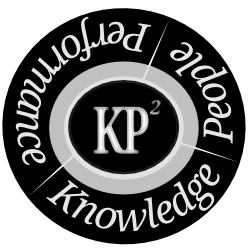The PhD program I am enrolled in is called ‘Dynamic Capabilities and Relationships’. One question I hear frequently from both colleagues and friends is: What are these dynamic capabilities? This post aims at providing a definition, a graph, and some references that I can refer people to when I hear this question again in the future.
Dynamic capabilities have emerged as a major stream in the field of strategy research over the past 15 years (Eisenhardt and Martin, 2000; Hodgkinson and Healey, 2011; Teece, Pisano, and Shuen, 1997). They are defined as “the firm’s processes that use resources – specifically the processes to integrate, reconfigure, gain and release resources – to match and even create market change. Dynamic capabilities thus are the organizational and strategic routines by which firms achieve new resource configurations as markets emerge, collide, split, evolve, and die” (Eisenhardt and Martin, 2000, p. 1107). At their core, the development of dynamic capabilities is the response of strategy researchers to an ever-changing world.
According to Teece (2007, p. 1319), “dynamic capabilities can be disaggregated into the capacity (1) to sense and shape opportunities and threats, (2) to seize opportunities, and (3) to maintain competitiveness through enhancing, combining, protecting, and, when necessary, reconfiguring the business enterprise’s intangible and tangible assets”. The graph below is from Augier and Teece’s (2006) paper, published in the journal Industrial and Corporate Change. It differs slightly from the better known one by Teece (2007), published in the Strategic Management Journal. However, Oxford Journals makes it fairly easy for me to use their content on my blog, so I have chosen the former graph over the latter for the purpose of this post.
References:
Augier, M., & Teece, D. J. (2006). Understanding Complex Organization: The role of Know-how, Internal Structure, and Human Behavior in the Evolution of Capabilities. Industrial and Corporate Change, 15(2), 395–416. doi:10.1093/icc/dtl005
Eisenhardt, K. M., & Martin, J. A. (2000). Dynamic capabilities: What are they. Strategic Management Journal, 21(10/11), 1105–1121.
Hodgkinson, G. P., & Healey, M. P. (2011). Psychological foundations of dynamic capabilities: reflexion and reflection in strategic management. Strategic Management Journal, 32(13), 1500–1516. doi:10.1002/smj.964
Teece, D. J., Pisano, G., & Shuen, A. (1997). Dynamic Capabilities and Strategic Management. Strategic Management Journal, 18(7), 509–533. Retrieved from
Teece, D. J. (2007). Explicating Dynamic Capabilities: the Nature and Microfoundations of (Sustainable) Enterprise Performance. Strategic Management Journal, 28(13), 1319–1350.



BIEN